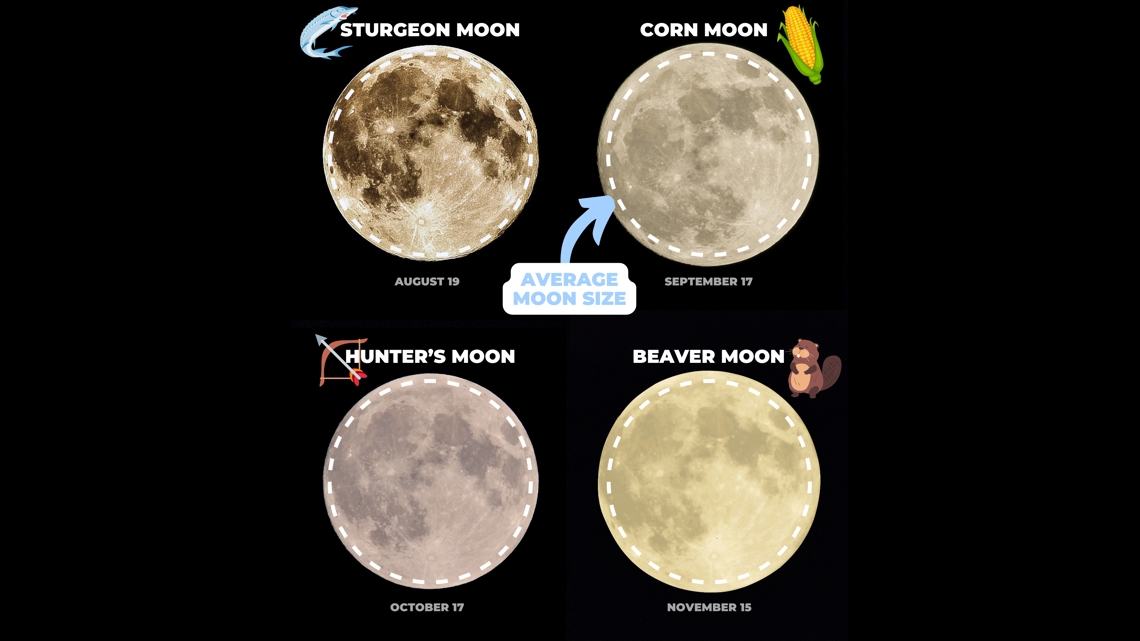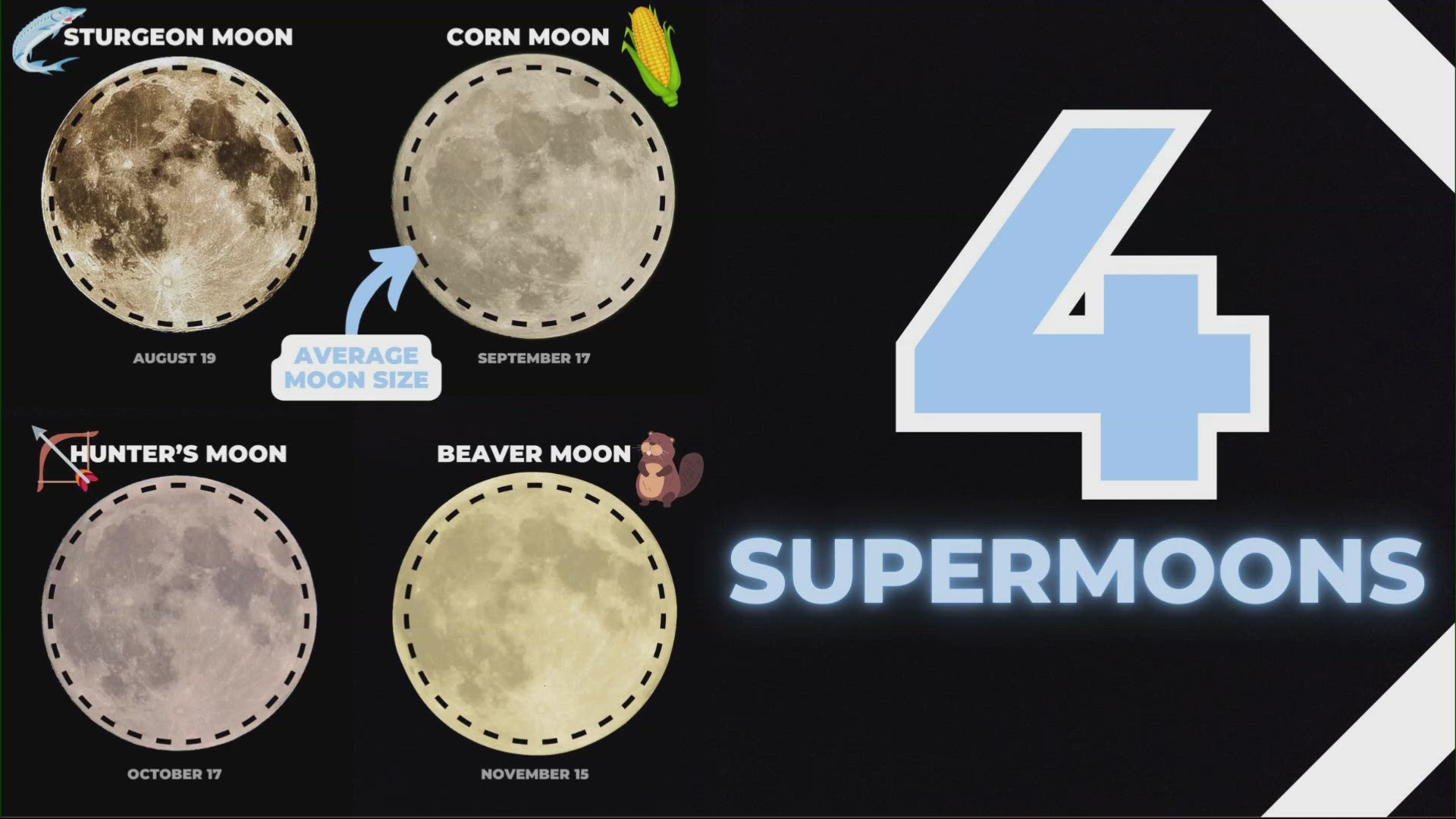INDIANA, USA — Look up! We do not just have a full moon for August, but rather a full blue supermoon. In fact, it is the start of four consecutive supermoons coming up. They moon will appear larger and brighter in the night sky.
August full Sturgeon moon
Seasonal "Blue" Moon: It is the third full moon in a stretch of four full moons in one season.
Supermoon: Larger than normal full moon, thanks to the moon passing closer to the Earth.
Tap HERE to see the sky forecast for viewing the moon.
The moon has an elliptical orbit around Earth. It is not a circle. This means the distance of the moon, thus how large it looks, changes slightly over time. Perigee is when the moon is closest to the Earth, making it look larger. Apogee is when the moon is at its farthest from the Earth, making it look smaller.
At a maximum, it can be 251,968.5 miles away.
At a minimum, it can be 225,803.8 miles away.
- The August full moon (19th) will be 224,917 miles away.
- The September full moon (18th) will be 222,131 miles away.
- The October full moon (17th) will be 222,055 miles away.
- The November full moon (15th) will be 224,853 miles away.
How much larger will the moon appear?


We created this illustration to roughly estimate the size of the moon compared to normal. The white, dotted line marks the size of an average full moon. You can see the next four full moons will be slightly larger, and thus brighter, in the night sky.
Below is an illustration from NASA showing the varying distances of the moon from the Earth, making it appear larger or smaller.


Bonus fact — if you are looking at the full moon, you may see a shooting star when you look away from the moon. The Perseids are still active. They are not at peak, but don't be surprised if you look at the night sky during the August full moon. Granted, the full moon adds a lot of extra light, making it difficult to see meteors, but it is still possible.

